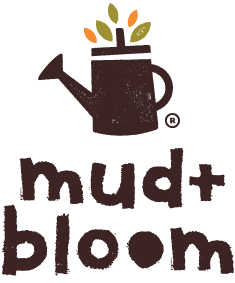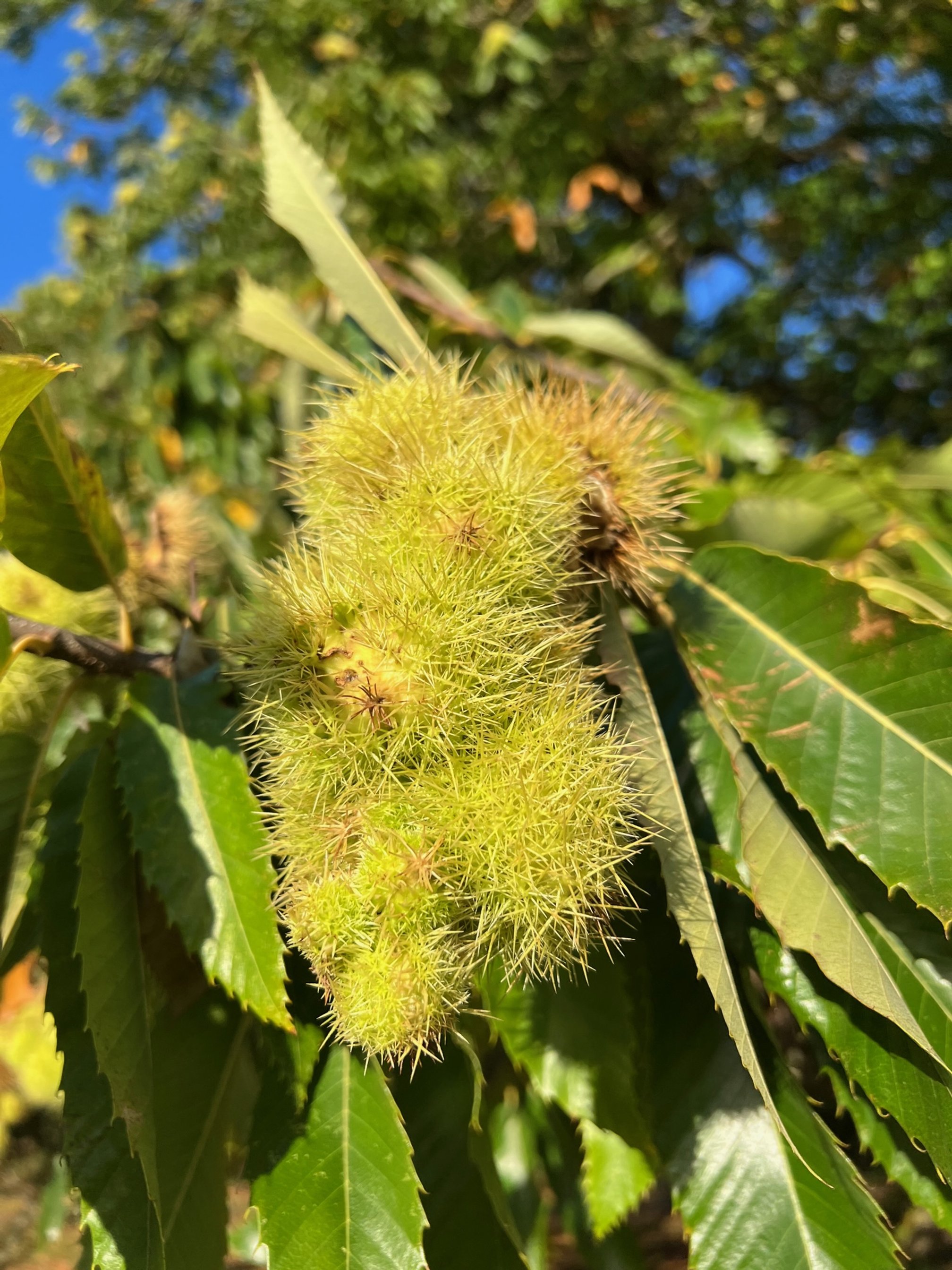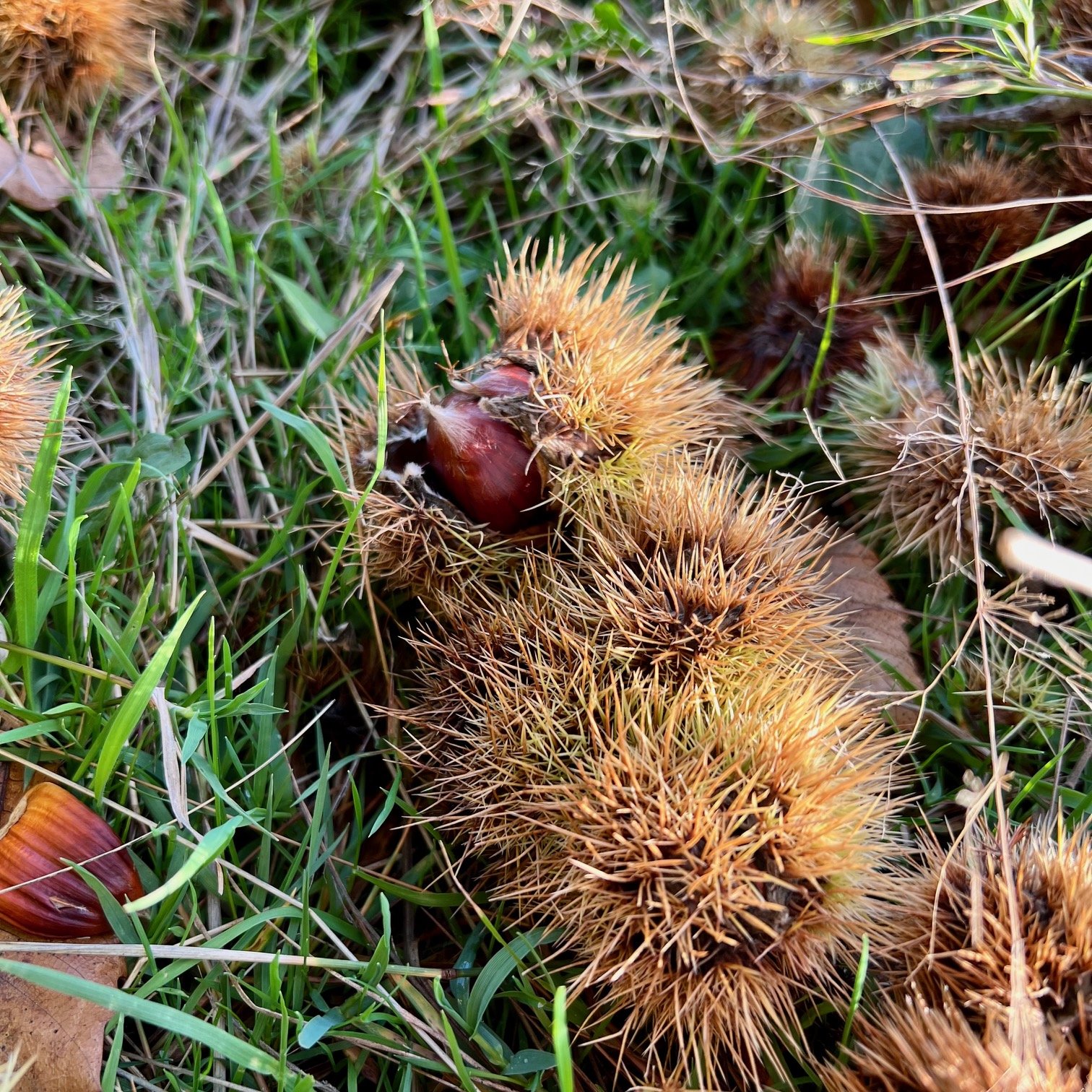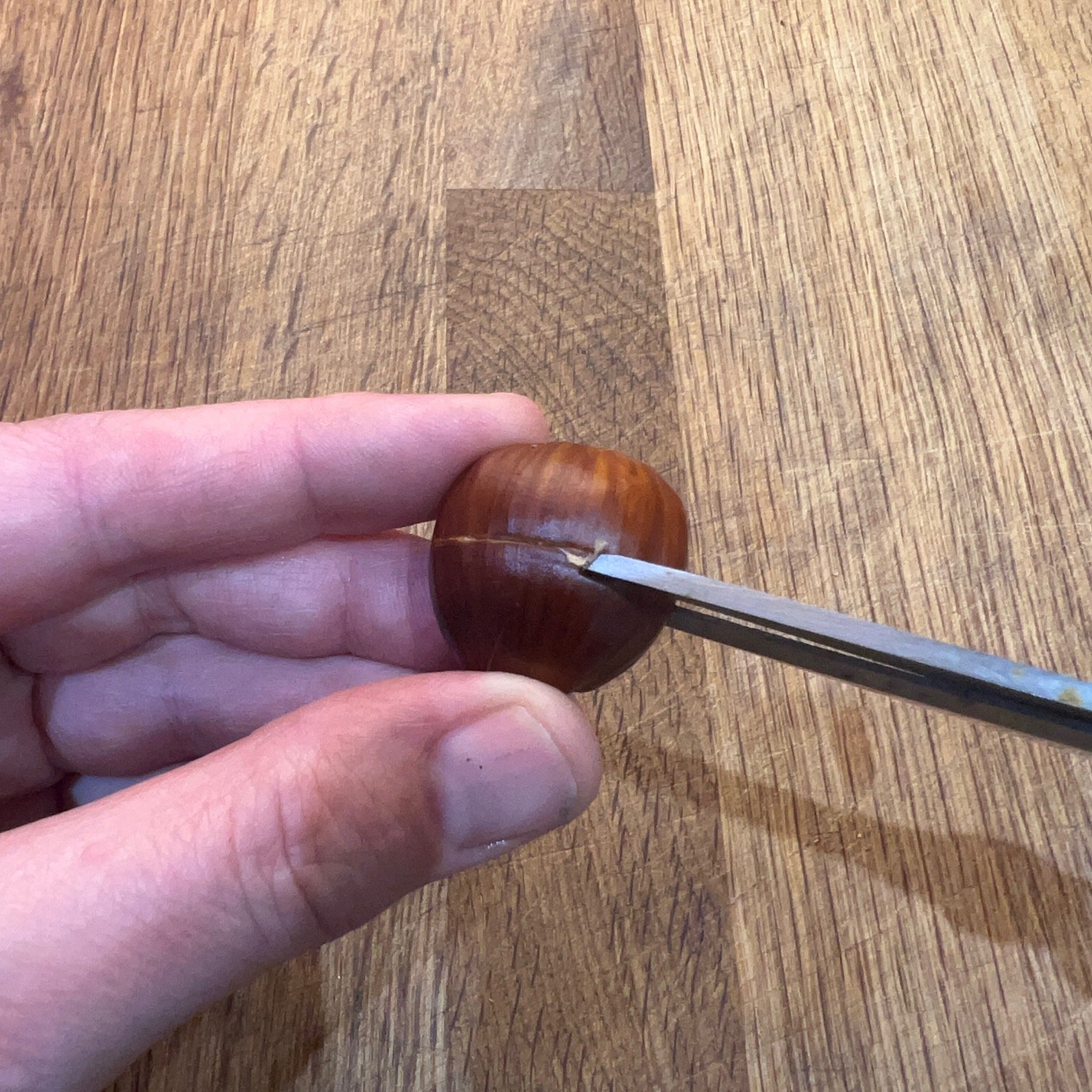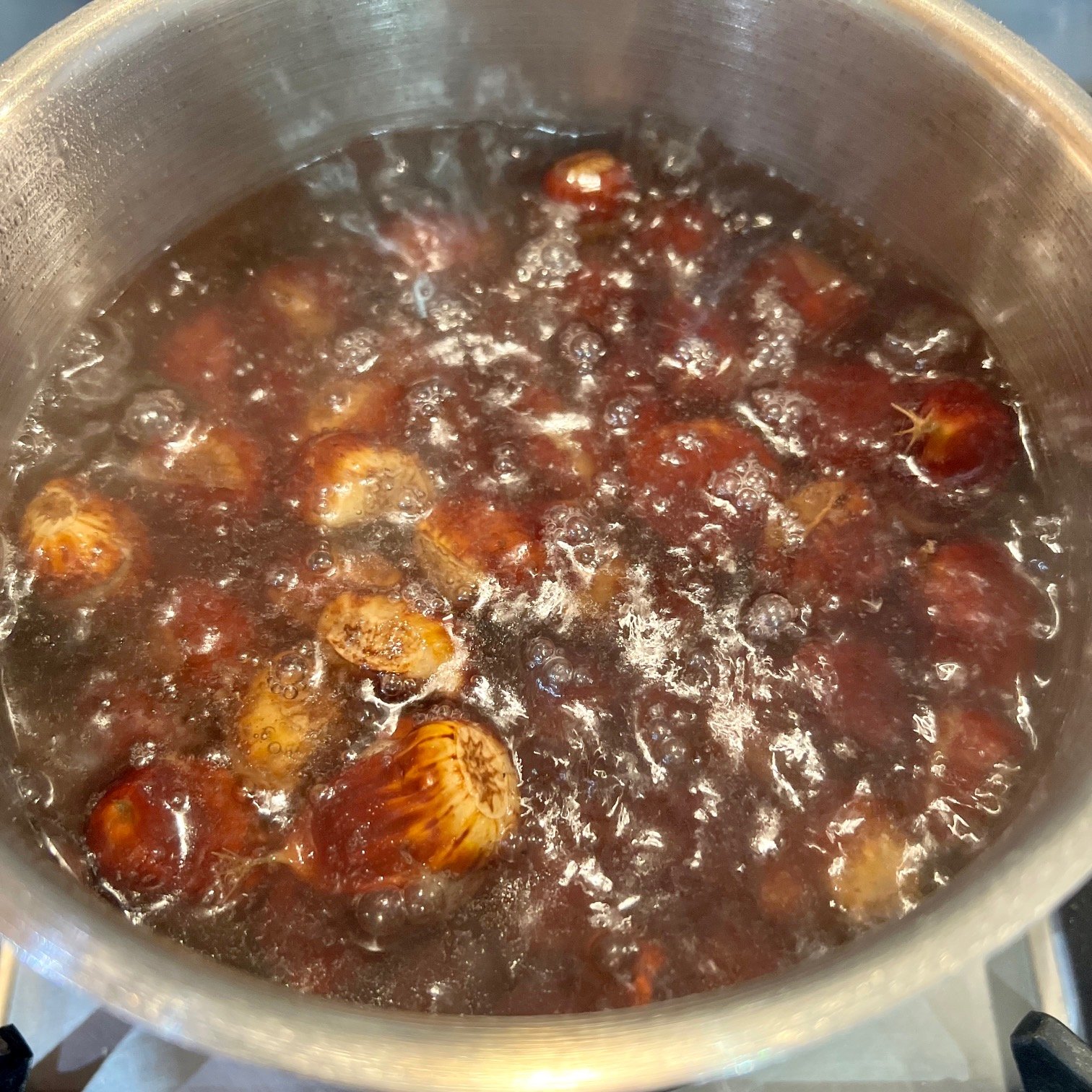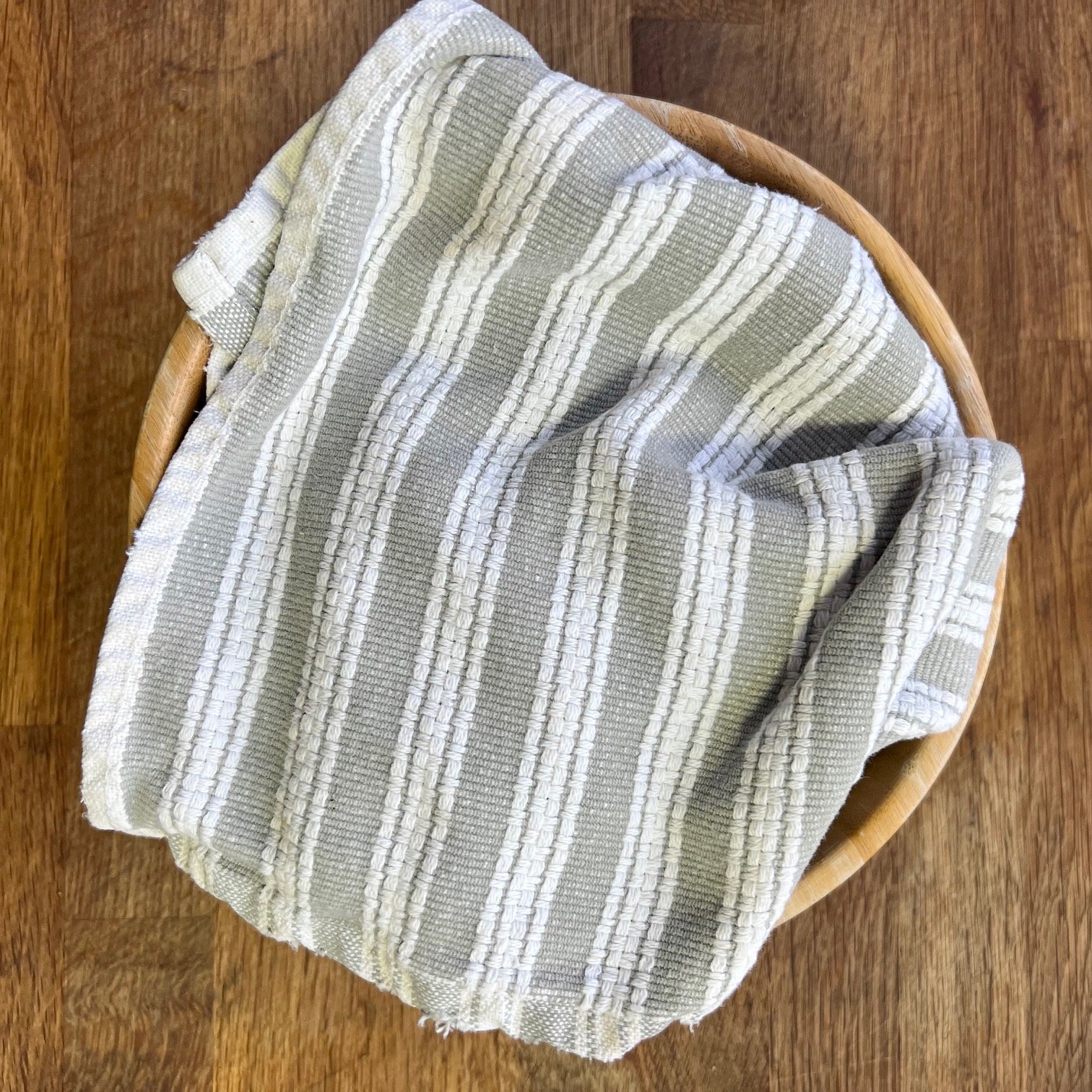Roasting foraged chestnuts
Sweet chestnuts are such an autumn treat - delicious roasted or cooked in soup, stuffing or risotto. They taste sweet and slightly nutty and are really nutritious. If you’re lucky enough to have a sweet chestnut tree nearby, then you can forage your own which is such a fun thing to do with children. My son and I made these roasted sweet chestnuts after a blustery autumnal walk collecting the sweet chestnuts, and we felt very cosy sitting indoors snacking on them!
What you will need:
Tough gloves such as gardening gloves to protect your fingers
A bag or container to collect your chestnuts in
Scissors or a paring knife
Saucepan
Roasting tin or baking tray
Oven
Tea towel
Butter
Salt
Foraging for sweet chestnuts:
Chestnut season starts in October though they don’t usually ripen until mid-late October. Sweet chestnut trees are found all around the UK in woods and copses but quite often you’ll see them in parkland.
You can recognise a sweet chestnut tree by its distinctive leaves, which are large and have serrated edges. In autumn, the most telling characteristic of the chestnut tree is the lime-green, spiny husks that grow in clusters on the tree where the chestnuts form. You’ll often see the ground underneath a sweet chestnut tree is covered in lots of these spiky balls! The husks contain 2-3 shiny, roughly triangular nuts with a distinctive tuft on the end.
It’s important not to confuse sweet chestnuts with horse chestnuts (conkers), which are inedible. Horse chestnuts looks very similar but the husks have a glossy shell with far less spines which are thicker and shorter and generally contain only one larger rounded nut.
The chestnuts are ripe when they fall to the ground and the green husks begin to brown and start to split open with the nuts peeping out.
The easiest way to remove the sweet chestnuts from their spiky casing is by pulling them apart by standing on the husk, one foot on each side until it splits and the chestnuts pop out. You can also use a thick pair of gloves, such as gardening gloves, to protect your hands as your peel away the husk.
Keep the chestnuts that are glossy, rounded and feel firm. Discard any nuts that are wrinkled, soft or have holes in. If the lower part of the chestnut is white or pale yellow, it's not ripe yet so leave it for the squirrels. You might notice that some husks are already open and empty where the squirrels have taken the nuts!
Once you are home, put your chestnuts in pan or bowl of water to clean them. If any of them float, they should be thrown away - air has got into them from burrowing insects.
Preheat your oven to 220C (200C fan).
With the tip of a sharp knife, score a line across the rounded side of the nuts. You can also use a pair of scissors to do this by placing the nut, rounded side upwards, in between the tips of the scissor blades and turning your wrist so that you drag the top blade across the rounded side of the nut. It’s much easier than it sounds!
Make sure you cut through the inner skin of the chestnuts but try not to cut into the nut itself. This incision will allow the steam to escape when cooking. If the chestnut shells are not properly scored, they can explode!
Next, put the prepared chestnuts into a pan and cover with cold water and place over a high heat. As soon as the water begins to boil, drain the nuts and transfer to a roasting tin or baking tray with the scored side facing up.
Place the tray in your preheated oven and roast for 15-30 minutes until the shell starts to curl away from the nut. The time will vary depending on the size of your chestnuts. (Mine needed to stay in the oven a bit longer for easier peeling - oops!).
Remove the nuts from the oven and wrap them in a clean tea towel and leave for 10 minutes to continue steaming.
While you are waiting for your sweet chestnuts, melt a knob of butter either in a small saucepan on a low heat or in a small dish in the microwave on short 5-10 second blasts. Add a sprinkle of salt to your melted butter.
When the chestnuts are cool enough to handle you can peel away the shell and brown skins, using a small knife if necessary. Serve them warm, ready to be dipped in the melted butter and salt.
Enjoy your roasted sweet chestnuts!
Author: Denise Hope, home educating mum of two boys
